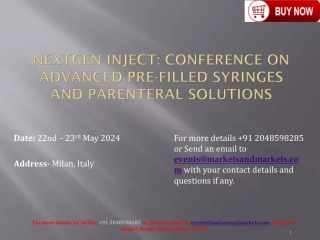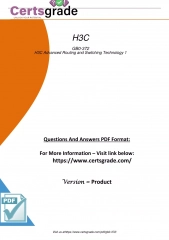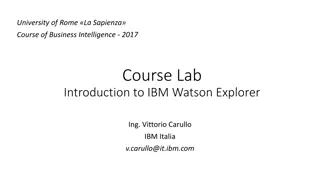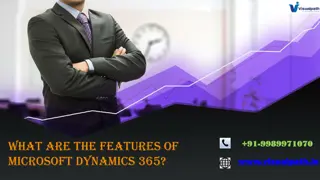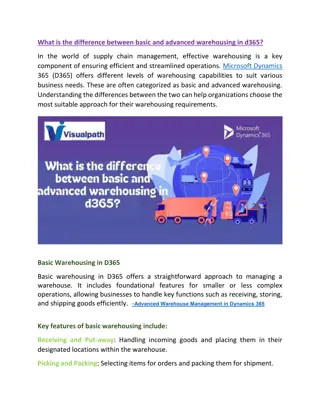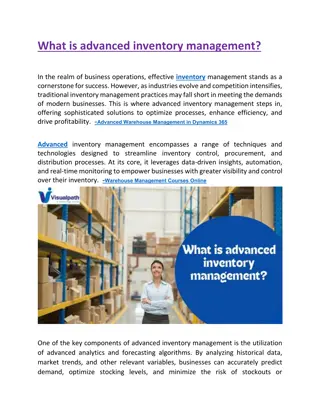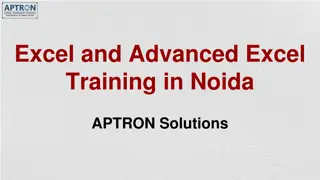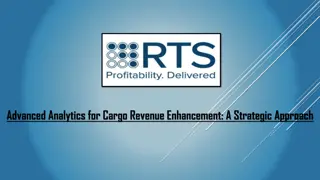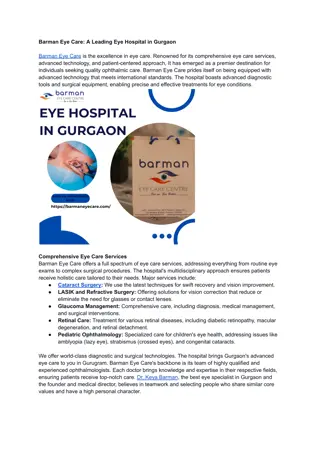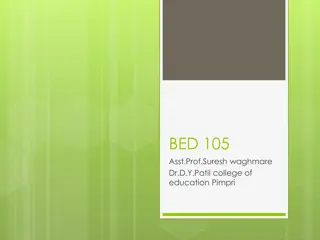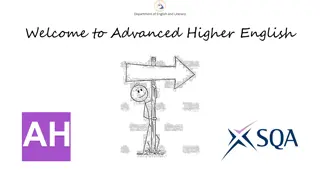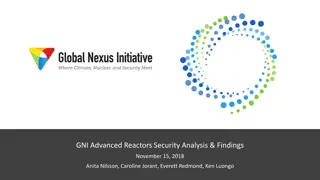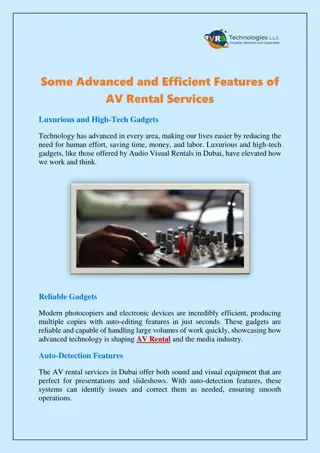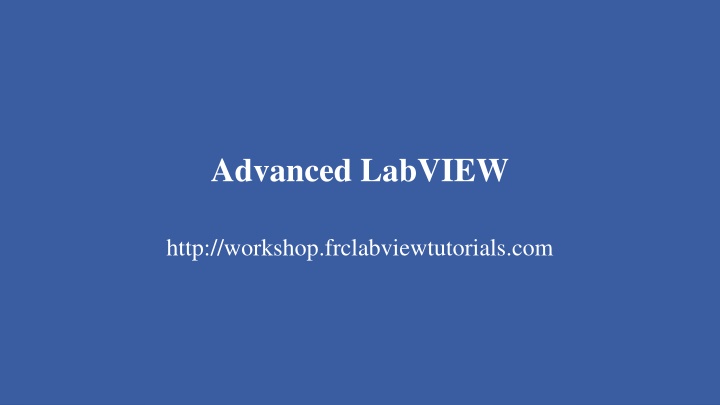
Advanced LabVIEW Workshop Tutorials for Customizing Dashboard and Implementing FGV
Explore advanced LabVIEW tutorials on customizing the dashboard, implementing functional global variables (FGV), VI properties, state machine architectures, and more. Enhance your LabVIEW skills with practical examples and demonstrations.
Download Presentation

Please find below an Image/Link to download the presentation.
The content on the website is provided AS IS for your information and personal use only. It may not be sold, licensed, or shared on other websites without obtaining consent from the author. If you encounter any issues during the download, it is possible that the publisher has removed the file from their server.
You are allowed to download the files provided on this website for personal or commercial use, subject to the condition that they are used lawfully. All files are the property of their respective owners.
The content on the website is provided AS IS for your information and personal use only. It may not be sold, licensed, or shared on other websites without obtaining consent from the author.
E N D
Presentation Transcript
Advanced LabVIEW http://workshop.frclabviewtutorials.com
Customizing the Dashboard Open Project
Customizing the Dashboard Open Project Sending data from robot
Customizing the Dashboard Open Project Sending data from robot Smart Dashboard VI s Named (case sensitive) values
Customizing the Dashboard Open Project Sending data from robot Smart Dashboard VI s Named (case sensitive) values
Customizing the Dashboard Open Project Sending data from robot Sending data to robot
Functional Global Variable Side note https://frclabviewtutorials.com/tutorials/fgv/
FGV Functional Global Variable Code
VI Properties Quick Intro https://frclabviewtutorials.com/tutorials/fgv/ SR Flip Flop Demo
VI Properties Quick Intro https://frclabviewtutorials.com/tutorials/fgv/ SR Flip Flop Demo Edge Detector https://frclabviewtutorials.com/tutorials/memory-library/
Architectures State Machine
Architectures State Machine
Architectures State Machine
Architectures State Machine Producer-Consumer Parallel loops First creating data or instructions Other handling
Architectures State Machine Producer-Consumer Parallel loops Use either queue or fgv
Producer Consumer Demo (side note) In Computer Science (and CE, but software specifically), there s a concept call separation of concerns (Wikipedia: link) [Each segment of code should only deal with a single task] (paraphrased) This might be: Getting input Or controlling the shooter This set-up, allows you to separate the task of deciding what to do base on inputs (/auto) and how to do it(/interacting with the hardware)
Type Def. Useful for passing data both controls and indicators Demo
Type Def. Useful for passing data both controls and indicators Demo
PID WPI Video: https://www.youtube.com/watch?list=PL8BLGj0RyhMzNXX9gHBos WPRbqqn0gJUQ&v=UOuRx9Ujsog&feature=emb_logo
Closed Loop Control Open Loop:
Closed Loop Control Open Loop: Motor controller Robot arm Joystick Software
Closed Loop Control Open Loop Closed Loop Sensor Combined Software Motor controller Robot arm Joystick
Closed Loop Control Open Loop Closed Loop Example
Closed Loop Control Open Loop Closed Loop Example Move the arm
Closed Loop Control Open Loop Closed Loop Example Move the arm Tele-op.vi
Closed Loop Control Open Loop Closed Loop Example Move the arm Tele-op.vi Motor X = .25
Closed Loop Control Open Loop Closed Loop Example Set Arm Position to 90 Tele-op.vi Motor X = .25 Potentiometer
Closed Loop Control Open Loop Closed Loop Example (arm position) Set Arm Position to 90 Tele-op.vi Motor X Potentiometer
Closed Loop Control - PID PID stand for: Proportional Integral Derivative (arm position) Set Arm Position to 90 Tele-op.vi Motor X Potentiometer
Closed Loop Control - PID PID stand for: Proportional Integral Derivative Output = Kp E(t) + Ki E (t) + KdE (t)
PID Proportional
PID Proportional Constant multiplied by error (offset) The larger this is, the faster the robot approaches the setpoint (smaller rise time) If too large, the robot will overshoot the target consistently
PID Proportional Constant multiplied by error (offset) The larger this is, the faster the robot approaches the setpoint (smaller rise time) Integral Constant multiplied by integral of all previous error values Used to eliminate steady state error (reducing offset after movement) If too large, robot will eventually (> 5s) respond vehemently
PID Proportional Constant multiplied by error (offset) The larger this is, the faster the robot approaches the setpoint (smaller rise time) Integral Constant multiplied by integral of all previous error values Used to eliminate steady state error (reducing offset after movement) Differential The larger this is, the less overshoot and settling time (less bounce) If too large,
PID Tuning
PID Tuning Several methods available Ziegler Nichols* Tyreus Luyben Cohen Coon str m-H gglund Manual Tuning*
PID Example code

